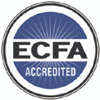Serving Others was Center Stage in the First Thanksgiving

My wife and I just returned from a short vacation in Cape Cod, Massachusetts. While there, we visited the Plimouth-Patuxet [their spelling] Museum in Plymouth, MA. We toured a recreated Wampanoag Indian village and a recreated English settlement that represents the “plantation” the pilgrims built at Plymouth. From the costumed guides we encountered at the Museum, we learned about the struggles the English settlers endured to make a new life in America.
We also toured a recreated Mayflower ship which was constructed by hand in the manner ships were built in the 17th Century. What struck me from that portion of our tour is how very, very hard the journey to America was for the 102 English folk who made the trip. They and the animals they brought with them were shoehorned into the middle deck of the Mayflower for the 2 months it took them to arrive in America. My guess is the space was less than 700 square feet. Think about sanitation issues, seasickness, privacy, and everything else that comes with extreme crowding.
And it didn’t get much better when they made land. It took them a while to find a place suitable for a village (which, as it turned out, was an abandoned Indian village). It took a while longer to build housing and other means of shelter. All this during the winter of 1620-21. No wonder half of the English settlers died that first winter. BUT enough of them survived to tell their story and to begin the immigrant population of America from which all of us benefit today.
The myths of the first Thanksgiving
The first Thanksgiving took place in the fall (probably between September and early November) of 1621 after the English harvested their first crop in the new land. Some believe this story is now 402 years old, but the fact is Edward Winslow—the only Englishman who recorded anything about the 3-day feast celebrated by the English—makes no mention of “thanks” or “thanksgiving.” Of course, they were thankful they had survived and were hopeful for their future, but it wasn’t anything like what we think of as Thanksgiving.
So, it may not be entirely correct to call the feast celebrated by the Wampanoag Indians and the survivors of Plymouth settlement on the eastern shore of what we know as Massachusetts the first Thanksgiving. Some historians suggest it may be more accurate to refer to the feast as a celebration of a sort of diplomatic arrangement between the Wampanoag and the Pilgrims to help each other in the event of an attack by outsiders. One source calls it “a political pot luck picnic.”
Serving Others was prominent in 1621
One thing comes through loud and clear from this story. The indigenous Indians at Plymouth served the Pilgrims with food and knowledge of survival in the new land. There is a high probability the Pilgrims would not have survived without the help of the Wampanoag. Imagine being without this piece of American history. Were it not for the service of the Indians for William Bradford and his ragged band of Englishmen at Plymouth, that just might be the case. The fact is days of thanksgiving were observed in Virginia and elsewhere in the early days of American settlement by the English. So, there is a good chance that some sort of observance of giving thanks for God’s mercy and providential care would have gone forward. What we can say is much of what we know about the Plymouth colony would not have survived if the Indians had not served those initial immigrants from England.
What caused them to serve these foreigners? That’s what I want to know. If I could go back in time, that’s what I would ask about. Why did the Wampanoag serve the Pilgrims? Why didn’t they see them as “invaders to their territory” and destroy them? They could have. They outnumbered the English considerably. Almost twice as many Indians (90 compared to only 50 English survivors of the harsh winter of 1620-21) took part in the three-day feast. So, why did they join in the feast and bring food to share with the English as Edward Winslow says in his record? We don’t know. Very little is recorded from their side of the story.
Actually, the Wampanoag had plenty of reason to kill the English settlers at Plymouth. The English brought diseases from Europe for which the Indians had no immunity so that large numbers of them died from those diseases. But the Wampanoag did not see the Pilgrims as enemies but as fellow human beings who needed their help.
See a need; meet a need.
This brings me to the point of this blog. One of the basic tenets of compassionate service is to see a need and meet that need. A person who has compassion will respond compassionately to needs. Obviously, the Wampanoag were compassionate people. As they got to know the English people who settled at Plymouth, they saw their struggles to obtain food and build shelter for themselves. They saw their suffering and responded with compassion. No other explanation makes sense. This Thanksgiving, may we add to our gratitude for God’s provision all of our days appropriate remembrance of the Wampanoag Indians at Plymouth. They are solid models of serving others.
What do you think?
How much of this blog is new to you? Has it ever occurred to you that serving others has a prominent place in what we often consider the original Thanksgiving? What will you do to serve others this Thanksgiving?



Serve with compassion every day as if it were Thanksgiving! Because it is – thanksgiving to God!